Here’s a tip: What you eat them with and how you consume them both matter. What you should know about potato nutrition, health advantages, cooking advice, and more is provided by a nutritionist.
What veggie is most popular in America? the potato, mainly in the form of potato chips and french fries. That may be a contributing factor to the widespread misconceptions regarding their’ nutritional value and even their vegetable status.
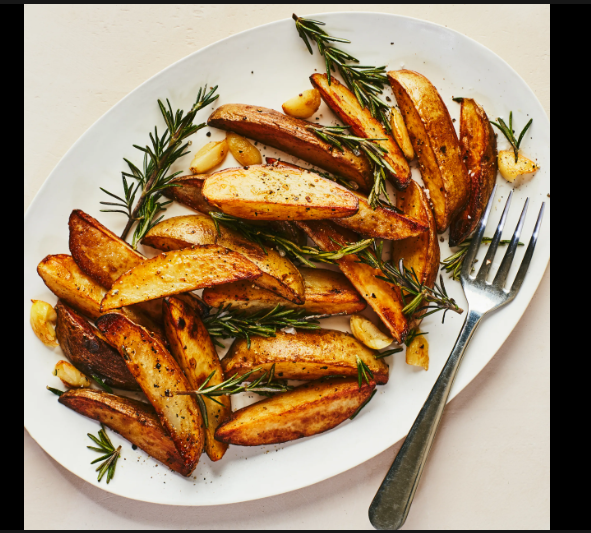
Also read-Is Pasta Healthy Or Unhealthy?
You wouldn’t even realize that potatoes are a vegetable. They are regarded as starchy vegetables but are actually stem tubers. And because of this, low-carb dieters have been demonizing it for decades. They are distinguished from vegetables that wear health haloes, such as kale, spinach, carrots, and broccoli, since they are referred to as “starchy” veggies. Those are the vegetables that are frequently listed as “free foods” on programs for weight loss.
The “eat a rainbow” campaign also didn’t properly include the poor potato because it didn’t emphasize the health advantages of white foods like mushrooms, cauliflower, and onions. While it’s true that foods with a dark color are rich in nutrients, white foods don’t always have any nutritional worth. In some circumstances, white produce is even more valuable than colorful crops.
In order to determine whether a potato is a vegetable or simply a starchy carb that belongs in the bread group, let’s peel back some of the facts about it and see what they actually have to offer.
Are potatoes healthy?
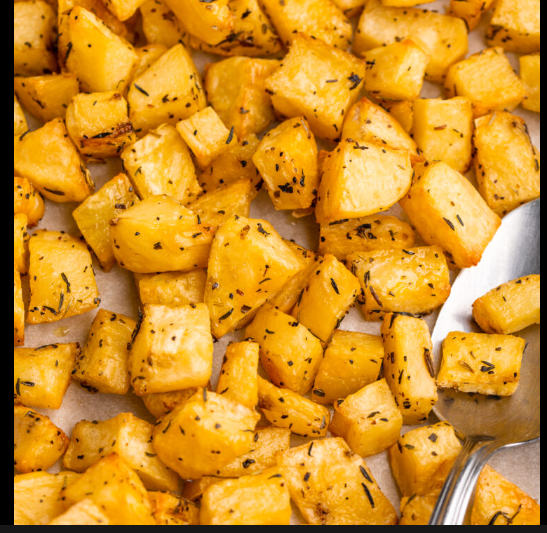
Potassium and fiber, two minerals we don’t get enough of, are among the many nutrients that are abundant in potatoes. In fact, if you eat the skin, they’re an excellent source of potassium, vitamin C, vitamin B6, and fiber.
Other benefits of potatoes include:
1. Food allergies are unusual with potatoes: Although a potato allergy is uncommon, it can cause mild to severe symptoms in the skin, respiratory system, or digestive system. Even a rash on your hands from cutting or peeling could be a symptom.
2. Potatoes are reasonably priced: One pound is roughly equal to two medium-sized potatoes (like russets), which should fit comfortably in your hand. In the US, potatoes typically cost $.95 a pound at retail.
3. Gluten is naturally absent from potatoes. Potatoes offer nutritional value without causing any discomfort for those who have celiac disease or gluten sensitivity. Check the ingredient lists of potato recipes carefully because some of the other ingredients may not be gluten-free.
4. Potatoes help your workout. If you’re looking to boost your pre-work, potatoes can help your muscles perform and recover. A potato has carbs that are easy to digest, meaning that they provide readily available energy during exercise, and its potassium content is important for muscle contractions.
Potato Nutrition

One medium russet potato contains:
- More than 45% of your daily vitamin C needs
- More potassium (620 mg) than a banana (422 mg).
- 10% of your daily vitamin B6 needs
- 6% of your daily iron needs.
- 110 calories.
- 2 grams of fiber.
- 3 grams of protein.
Vitamins and minerals in potatoes
All potato varieties are great providers of vitamin C, a potent antioxidant that helps maintain a strong immune system. A potato served as a side dish with meat or chicken will help you absorb more iron from those foods because vitamin C improves iron absorption.
Potassium is a nutrient that potatoes have a lot more of than bananas. Potassium, an electrolyte necessary for the healthy operation of our heart, muscles, and nervous system, is a nutrient of concern because we don’t get enough of it. When potassium was included in the newly revised Nutrient Facts Panel on food labels, its significance was highlighted. A diet high in potassium can lower blood pressure, protect the heart, and lower the risk of stroke.
Additionally, potatoes give us vitamin B6, which is essential for metabolizing fats and proteins in the body and for transforming food into energy.
Iron, which is essential for distributing oxygen throughout our bodies, is also present in potatoes.
They also include a tiny amount of protein, calcium, and magnesium.
Carbs in potatoes
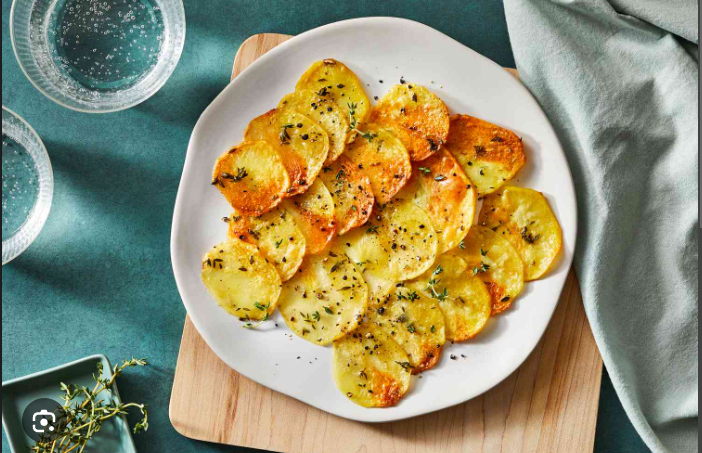
Our body converts starch, a form of complex carbohydrate, into glucose for use as fuel. Therefore, even though potatoes are part of your daily requirement for vegetables, you should also include them in the meal’s carbohydrate portion. Instead of bread, pasta, rice, or other grains, potatoes can be an excellent substitute.
Blood sugar levels might rise as a result of carbohydrates. They can, however, prolong digestion and result in a more steady release of glucose into the bloodstream when combined with protein, fiber, and unsaturated fats. There is no requirement for people with diabetes to completely avoid vegetables, according to the American Diabetes Association and other specialists. Again, the important thing is to combine the carbohydrate with lean protein, fiber, and healthy fats.
Types of Potatoes
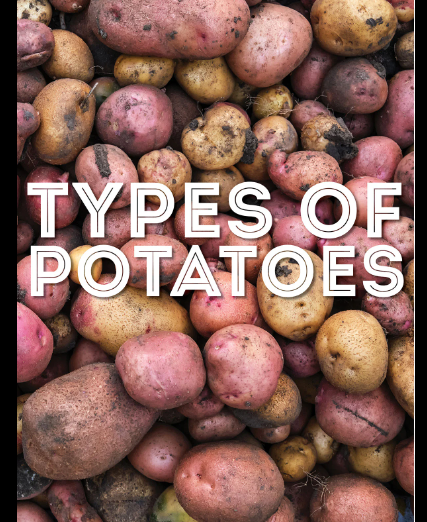
While most of us tend to think first of white potatoes, there are more than 200 varieties of potatoes available in the U.S. These varieties fall under seven main types of potatoes:
- Russets are medium to large in size and typically oval-shaped. They have brown, hearty skin and pale, yellow flesh. Their texture is commonly described as floury and fluffy, making them ideal for mashed potatoes.
- Red. Small to medium in size with thin red skin and white flesh. Because of their waxy texture, red potatoes stay firm throughout the cooking process, making them perfect for potato salads or for adding to soup.
- White: These potatoes are small to medium in size, and both their skin and flesh are white. White potatoes hold their shape well after cooking, and their skins are very thin, so there is no need to peel them for a potato salad.
- Yellow: Available in all sizes, they have a tan to golden skin and yellow flesh. Their naturally velvety or buttery texture makes them delicious baked, roasted, or mashed.
- Blue/purple: Small to medium-size, these potatoes have deep purple, blue, or slightly red skin. Their flesh can be blue, purple, pink, or white. They have moist but firm flesh. (Blue and purple Peruvian varieties have higher starch content and a floury texture.)
- Fingerling: Waxy, firm, and finger-shaped, these potatoes are great split and oven-roasted.
- Petite: Available in all colors, petites save on prep time because they can be prepared and served whole without slicing or chopping.
The differences between potato cultivars in terms of nutrients’ quantity and type are modest.
You might be wondering, What about sweet potatoes? Sweet potatoes are not closely related to conventional potatoes, despite the fact that they are both root vegetables.
Healthy Potato Recipes
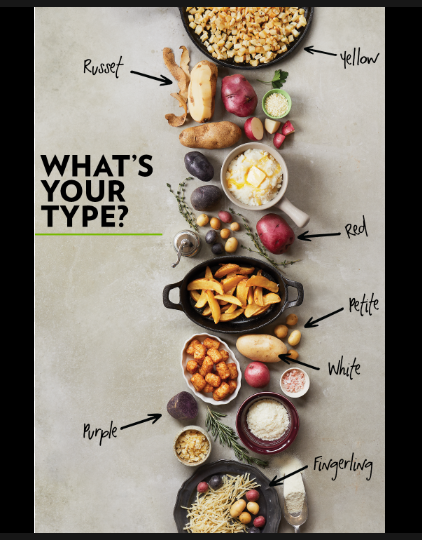
Here are eight nutritious potato recipes:
- Baked
A traditional baked russet is always a good choice. Try something fresh like mustard, salsa, any kind of hummus, low-fat Greek plain yogurt, cottage cheese, or an egg instead of the traditional high-calorie toppings. Add black beans, diced tomatoes, steamed broccoli, and guacamole to a baked potato to turn it into a meal.
Another excellent way to enjoy baked white or orange potatoes is with homemade baked potato wedges, fries, or chips. Simply peel and cut a russet potato into wedges, cover with oil and seasonings, and then roast for 25 to 30 minutes at 400 degrees F.
2. Roasted
Any type of potato can be cubed and combined with olive oil, herbs, and spices. Then bake them in the oven at 425 degrees F for 60 minutes, stirring every 10 to 15 minutes, or until golden brown. You may eat them plain or add other vegetables, nuts, and garnishes to make a tasty side dish.
3. Mashed
The traditional comfort food is mashed potatoes, which are silky and creamy. You can transform homemade mashed potatoes into a nutritious side dish by making a few minor adjustments. Potatoes should be boiled before being mashed with a little milk, butter, and plain Greek yogurt. Yogurt reduces saturated fat while enhancing creaminess. Even other vegetables, like spinach, can be added to classic mashed potato meals.
4. Shredded
Potato pancakes can be great as a side dish or bite-size appetizer. Try including shredded cheese and eating them for breakfast, topped with Greek yogurt and fresh fruit.
5. In a soup
Starchy potatoes add creaminess and texture to many different kinds of soups, from lentil to Italian meatball to classic potato soup.
6. In a skillet
Sliced, shredded, or diced potatoes are a simple addition to egg dishes like omelets or frittatas. Mix potatoes alongside a non-strachy potato to get a nice balance of carbs and fiber, like in a broccoli, tomato, and potato omelet.
7. In a salad
Traditional potato salad is typically heavy on the mayo and light on the veggies, but with a few small changes, you can make it a nutritious side dish. Swap out some of the mayo for plain Greek yogurt and add salt-free flavorings like fresh herbs. Boost the fiber and nutrient content by mixing in some non-starchy veggies like green beans and onions in addition to the potatoes. Other additions to consider are apples, capers, and celery.
8. As an appetizer
Potato bites are a fun way to get some veggies in during hors d’oeuvre time. Try making potato rounds and topping them with roasted red peppers and avocado.
Bottom Line

You can’t overlook the fact that a potato has about 15 grams of carbohydrates per small potato, or about the same as a slice of bread, if you have diabetes, are on a low-carb diet, or both. But potatoes offer more than just carbohydrates. They offer an abundance of nutrients. Pairing your potato with protein and other vegetables to add balance to your meal and make you feel full and content may be the best method to limit your potato intake as well as your blood sugar levels.
Also read-What Is Carb Cycling And What Does It Include?
images source: Google




































